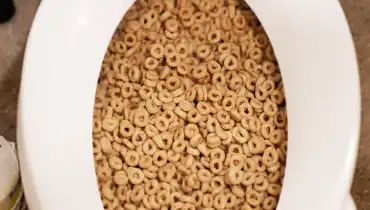Is it Feasible to Flush Food in the Toilet?
Is it Feasible to Flush Food in the Toilet?
Blog Article
What are your ideas concerning Is it safe to flush food (especially rice) down the toilet??

Introduction
Many people are often confronted with the problem of what to do with food waste, specifically when it pertains to leftovers or scraps. One common concern that occurs is whether it's alright to flush food down the bathroom. In this write-up, we'll explore the reasons why people could take into consideration purging food, the consequences of doing so, and alternative approaches for correct disposal.
Reasons why individuals may consider purging food
Lack of recognition
Some people might not recognize the possible injury caused by purging food down the toilet. They may incorrectly believe that it's a harmless method.
Ease
Purging food down the commode may appear like a fast and easy solution to taking care of undesirable scraps, particularly when there's no nearby trash bin readily available.
Negligence
In some cases, people may simply pick to flush food out of large negligence, without taking into consideration the consequences of their actions.
Repercussions of flushing food down the bathroom
Ecological impact
Food waste that ends up in waterways can add to air pollution and harm marine ecosystems. Furthermore, the water used to flush food can stress water resources.
Plumbing concerns
Purging food can result in clogged up pipelines and drains pipes, creating expensive plumbing fixings and inconveniences.
Types of food that ought to not be purged
Fibrous foods
Foods with fibrous appearances such as celery or corn husks can obtain tangled in pipelines and create clogs.
Starchy foods
Starchy foods like pasta and rice can take in water and swell, leading to blockages in pipes.
Oils and fats
Greasy foods like bacon or cooking oils should never ever be purged down the toilet as they can strengthen and trigger clogs.
Correct disposal techniques for food waste
Utilizing a garbage disposal
For homes geared up with waste disposal unit, food scraps can be ground up and purged with the pipes system. Nevertheless, not all foods are suitable for disposal in this way.
Recycling
Certain food product packaging materials can be reused, minimizing waste and minimizing ecological influence.
Composting
Composting is an environmentally friendly way to dispose of food waste. Organic materials can be composted and made use of to enrich dirt for gardening.
The value of appropriate waste administration
Minimizing environmental injury
Proper waste management methods, such as composting and recycling, assistance lessen contamination and maintain natural resources for future generations.
Securing plumbing systems
By preventing the practice of flushing food down the toilet, property owners can protect against expensive plumbing fixings and maintain the honesty of their plumbing systems.
Conclusion
In conclusion, while it might be tempting to flush food down the commode for benefit, it is very important to recognize the possible consequences of this action. By taking on proper waste administration methods and disposing of food waste responsibly, people can contribute to healthier plumbing systems and a cleaner environment for all.
FLUSH FOOD DOWN THE TOILET?
FLUSHING FOOD CAN CAUSE BLOCKED DRAINS IN YOUR HOME
All of the plumbing fixtures in your home are connected to the same sewer pipe outside of your home. This outdoor sewer pipe is responsible for transporting all the wastewater from your home to the Council sewer mains. Even small pieces of food that go down the kitchen sink can cause problems for your sewer. It should therefore be obvious that flushing larger bits of food, such as meat, risks a clog in either the toilet itself or the sewer pipes. Flushing greasy food is even more problematic because oil coagulates when it cools, coating the interior lining of your pipes.
THE TOILET IS NOT A BIN
Food isn’t the only thing that people shouldn’t be flushing down the toilet. People use the toilet to dispose of all kinds of things such as tampons, makeup wipes, dental floss, kitty litter and even underwear. Water goes to great lengths to educate residents about the high costs and stress placed on wastewater treatment systems simply from people flushing the wrong stuff down the toilet. It costs taxpayers millions of dollars each year, and homeowners thousands in blocked drain repairs.
FLUSHING FOOD IS A WASTE OF WATER
Flushing food is a waste of our most precious resource - water. In June this year Level 1 water restrictions were introduced to protect water supply from drought conditions. Much of New South Wales continues to be affected by prolonged drought with recent figures revealing up to 97 per cent of the state remains in drought. Depending on whether you have a single or dual flush toilet, every single flush uses between five and 11 litres of water. In the current climate this is a huge amount of water to be wasting on flushing food that should be placed in the bin (or better yet, the compost).
https://www.jabplumbingsolutions.com.au/blog/can-you-flush-food-down-the-toilet

I discovered that blog post about Think Twice Before Flushing Food Down Your Toilet when doing a lookup on the internet. Do you know another individual who is truly interested in ? Do not hesitate to share it. I am grateful for your time. Come back soon.
Get A Free Estimate Report this page